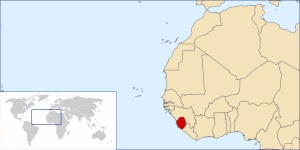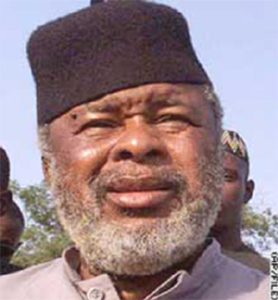 Sierra Leone intermezzo
Sierra Leone intermezzo
The early history of Sierra Leone is unique: long before the Americans launched their idea of a colony for freed slaves, in Liberia, the British already shipped ‘black poor’, many of them slaves that had deserted to the British during the American War of Independence, to a colony purchased in Sierra Leone, called the Province of Freedom. The first such enterprise, in 1787, failed: 30% of the immigrants died in the first three months, the rest was evicted by the local king, and were ultimately absorbed in the local community. The second, made up from freed slaves initially settled by the British in Nova Scotia in Canada, arrived in what became the colony of Sierra Leone in 1792, and was more successful, also because from 1808 the governance was handed over to the British government – which had, at the same time, passed the Abolition Act,
In the years afterwards British naval vessels patrolled the West African coast to ensure the end to the slave trade; many slaves from intercepted ships, called ‘recaptives’, from all along the coast, were landed in Sierra Leone, and joined not only the Nova Scotians, but also African soldiers that had been pensioned off by the British army after the end of the war with the French in 1815. In short, a melting pot of ‘Krios’ (Creoles), with few ethnic roots left, that lived mostly around the capital of the colony, appropriately called Freetown.
But as we have seen elsewhere in West Africa, during the 19th Century the European interest changed from trade to political control, and the British penetrated ever further inland, through treaties and more forceful means, establishing a Protectorate in addition to the existing Colony. This didn’t go smoothly: many of the local kings resented the takeover by the British, as well as the unilaterally introduced ‘hut tax’ of 5 shillings on every hut, and resisted violently. During these conflicts, British officers used the practice of cutting the hands of people to account for bullets spent, similar to what had occurred under the regime Leopold II of Belgium in the Congo Free State. And worse, a foreboding of things to come…
Despite a lot of tension, from the Krios who wanted more political influence, and against the tribal kings who were thought to be favoured by the British administration, and the separation in colony and protectorate, Sierra Leone in the early 20th Century was fairly stable, and prosperous, based on export of timber and diamonds, as well as other agricultural products. Independence in 1961 was a smooth process, led by long-active and popular politician Milton Mangai. Who, unfortunately, died in 1964, and was succeeded by his, unpopular, half-brother Albert Mangai. Who lost the 1967 election to Siaka Stevens. Who was ousted by a military coup hours after taking office. Which was followed by another military coup, and a third one, the last one restoring Stevens to power. All in little more than one year.
Where have we heard this before? Stevens ruled until 1985, increasingly unpopular, establishing a one-party state, executing opponents, and basically running the economy into the ground. At least, Stevens stepped down voluntarily, but his chosen successor, Joseph Momoh, until then conveniently head of the army, inherited a bankrupt state, at one point unable to pay government wages. Besides, a rebel movement led by one Foday Sankoh – and supported by Liberian warlord and later president Charles Taylor – had taken control over the northern diamond-rich areas in 1991. And in Africa, there are always soldiers on the lookout, for a sign of weakness.
The army overthrew the Momoh government in 1992. The coup was briefly popular, but rule by decree, military excesses and other autocratic behaviour soon eroded that popularity. And the battle with the rebels of Sankoh culminated in one of the worst civil wars ever conducted on earth, where it became de rigueur to chop of arms and legs, and ears and lips of civilians, rape the women, enlist children. Truly sickening. From all participating sides, mind you, no difference between government troops and rebels. But the Revolutionary United Front, or RUF, of Sankoh, did play a particularly cruel role.
Never mind more military coups, in 1996, and more attempts of civil rule, never mind an oil and arms embargo, never mind the shunning of ‘blood’ or conflict diamonds, never mind the interference of outside troops – another deployment of ECOMOG; the civil war continued until January 2002, with anywhere between 50,000 and 300,000 killed, thousands more mutilated, up to 10,000 children forced to fight, and perhaps 2 million people displaced. Sankoh was found guilty of terrorism, murder, rape and enslavement, among others, by an international tribunal, and sentenced to 52 years in prison in 2003. He died the same year.
Post-civil war, Sierra Leone has been trying to recover. Ahmad Kabbah, who first was elected president in 1996, in between several coups, again won the elections in 2002. With support from UN troops to keep the peace, with a Truth and Reconciliation Commission (where do you start, after such a conflict?), and with lots of debt relief, and the picking up of the economy, things are looking up, a bit. Politically, the country has seen democracy restored. Psychologically, it will take a long time to return to normalcy.
Next: to Freetown











